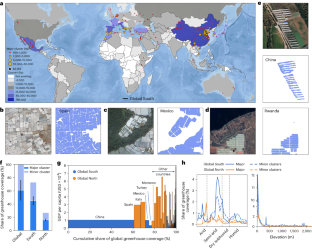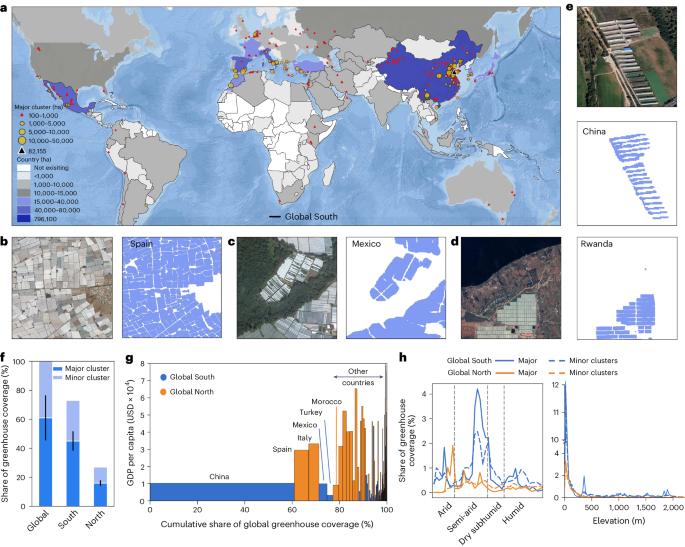Global area boom for greenhouse cultivation revealed by satellite mapping
IF 23.6
Q1 FOOD SCIENCE & TECHNOLOGY
引用次数: 0
Abstract
Greenhouse cultivation has been expanding rapidly in recent years, yet little knowledge exists on its global extent and expansion. Using commercial and freely available satellite data combined with artificial intelligence techniques, we present a global assessment of greenhouse cultivation coverage and map 1.3 million hectares of greenhouse infrastructures in 2019, a much larger extent than previously estimated. Our analysis includes both large (61%) and small-scale (39%) greenhouse infrastructures. Examining the temporal development of the 65 largest clusters (>1,500 ha), we show a recent upsurge in greenhouse cultivation in the Global South since the 2000s, including a dramatic increase in China, accounting for 60% of the global coverage. We emphasize the potential of greenhouse infrastructures to enhance food security but raise awareness of the uncertain environmental and social implications that may arise from this expansion. We further highlight the gap in spatio-temporal datasets for supporting future research agendas on this critical topic. Greenhouses are quickly proliferating in response to the world’s increasing demand for food, but information on their precise location, distribution and extent remains limited in many countries. This Analysis combines global very-high-resolution satellite imagery and artificial intelligence to address this knowledge gap, showing a dramatic increase in greenhouse coverage in the Global South.


卫星测绘显示全球温室种植面积激增
近年来,温室种植面积迅速扩大,但对其全球范围和扩展情况却知之甚少。我们利用商业和免费提供的卫星数据,结合人工智能技术,对温室种植的全球覆盖范围进行了评估,并绘制了2019年130万公顷温室基础设施的地图,其范围远远大于之前的估计。我们的分析包括大型(61%)和小型(39%)温室基础设施。通过研究 65 个最大集群(1,500 公顷)的时间发展,我们发现自 2000 年代以来,全球南部地区的温室种植面积急剧增加,其中中国的温室种植面积急剧增加,占全球种植面积的 60%。我们强调了温室基础设施在加强粮食安全方面的潜力,但也提高了人们对这一扩张可能带来的不确定环境和社会影响的认识。我们进一步强调了在时空数据集方面的差距,以支持未来关于这一关键主题的研究议程。
本文章由计算机程序翻译,如有差异,请以英文原文为准。
求助全文
约1分钟内获得全文
求助全文

 求助内容:
求助内容: 应助结果提醒方式:
应助结果提醒方式:


